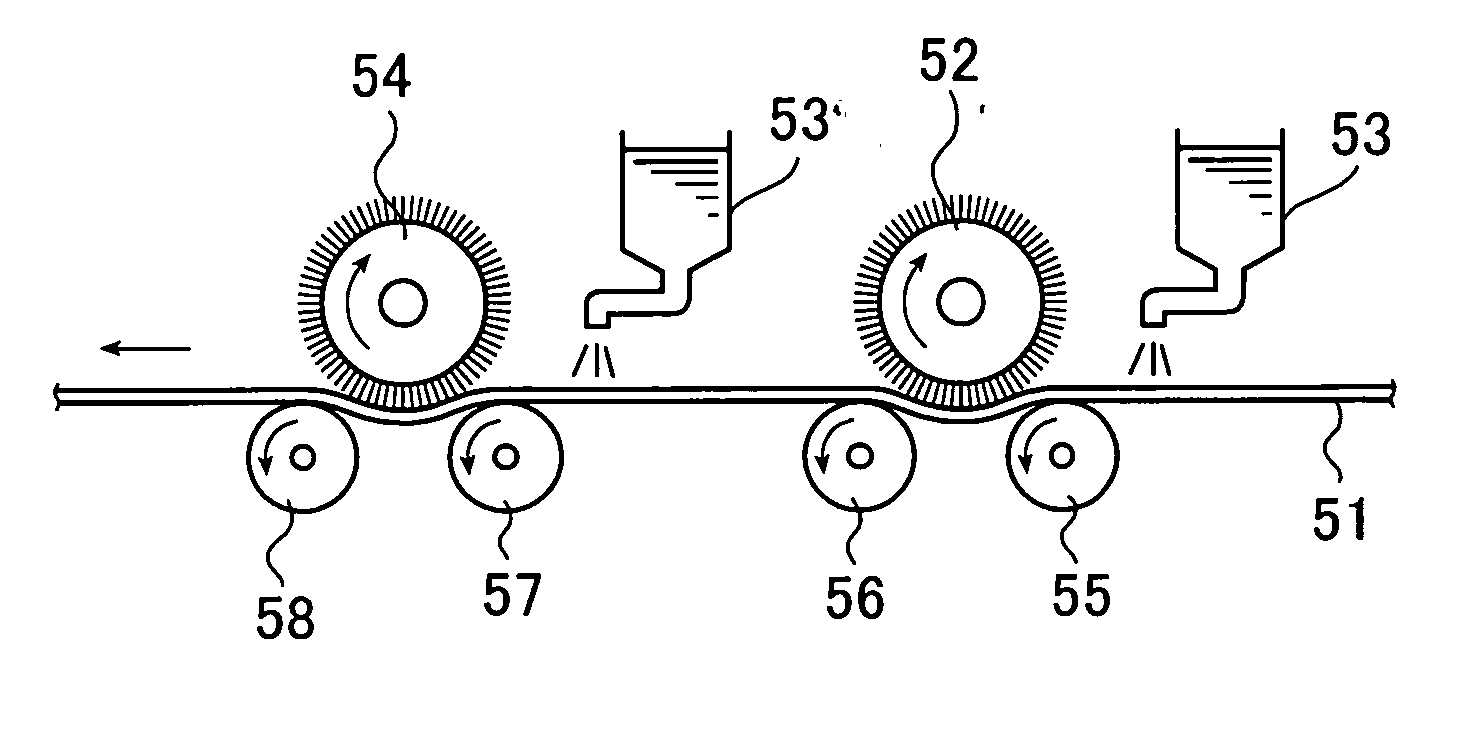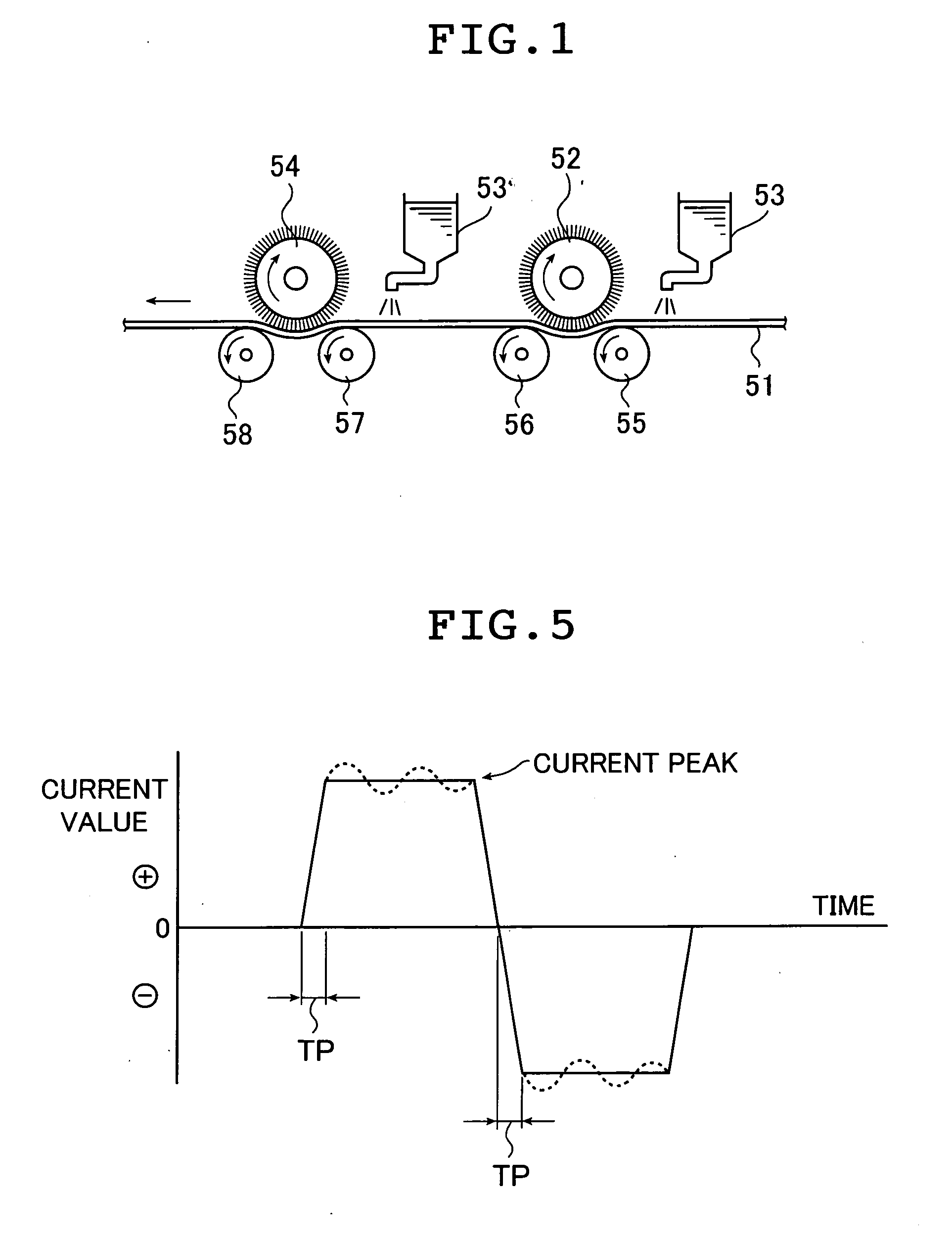Lithographic printing plate support and presensitized plate
- Summary
- Abstract
- Description
- Claims
- Application Information
AI Technical Summary
Benefits of technology
Problems solved by technology
Method used
Image
Examples
example 1 , examples 6 to 9
Example 1, Examples 6 to 9, and Comparative Examples 6 to 9]
[0401] Lithographic printing plate supports were obtained by subjecting aluminum plates (JIS A1050 material) with a thickness of 0.3 mm to the graining treatments as below. After each treatment or rinsing process, the solution or water remaining on the plates was removed with nip rollers.
[0402] Graining was carried out by performing the following surface treatments (a) to (e). sequentially.
[0403] (a) Alkali Etching Treatment
[0404] Etching treatment was performed for 10 seconds by spraying the aluminum plates as above with an aqueous solution having a caustic soda concentration of 30 g / L, an aluminum ion concentration of 10 g / L and a temperature of 60° C. so as to dissolve the plates in an amount of 0.5 g / m2. Then, the aluminum plates were rinsed with a spray of water.
[0405] (b) Desmutting Treatment
[0406] Desmutting treatment was performed by spraying the aluminum plates with a 12 g / L aqueous solution of nitric acid (co...
example 2
[0423] A presensitized plate was fabricated by following the procedure of Example 1 except that the current density was 12 A / dm2 and the amount of electricity was 300 C / dm2 in treatment (c) as above. The surface roughness Ra of the lithographic printing plate support obtained after the anodizing treatment was 0.34 μm.
example 3
[0424] A presensitized plate was fabricated by following the procedure of Example 1 except that the current density was 24 A / dm2 and the amount of electricity was 600 C / dm2 in treatment (c) . The surface roughness Ra of the lithographic printing plate support obtained after the anodizing treatment was 0.64 μm.
PUM
| Property | Measurement | Unit |
|---|---|---|
| Length | aaaaa | aaaaa |
| Length | aaaaa | aaaaa |
| Fraction | aaaaa | aaaaa |
Abstract
Description
Claims
Application Information
 Login to View More
Login to View More - R&D
- Intellectual Property
- Life Sciences
- Materials
- Tech Scout
- Unparalleled Data Quality
- Higher Quality Content
- 60% Fewer Hallucinations
Browse by: Latest US Patents, China's latest patents, Technical Efficacy Thesaurus, Application Domain, Technology Topic, Popular Technical Reports.
© 2025 PatSnap. All rights reserved.Legal|Privacy policy|Modern Slavery Act Transparency Statement|Sitemap|About US| Contact US: help@patsnap.com



